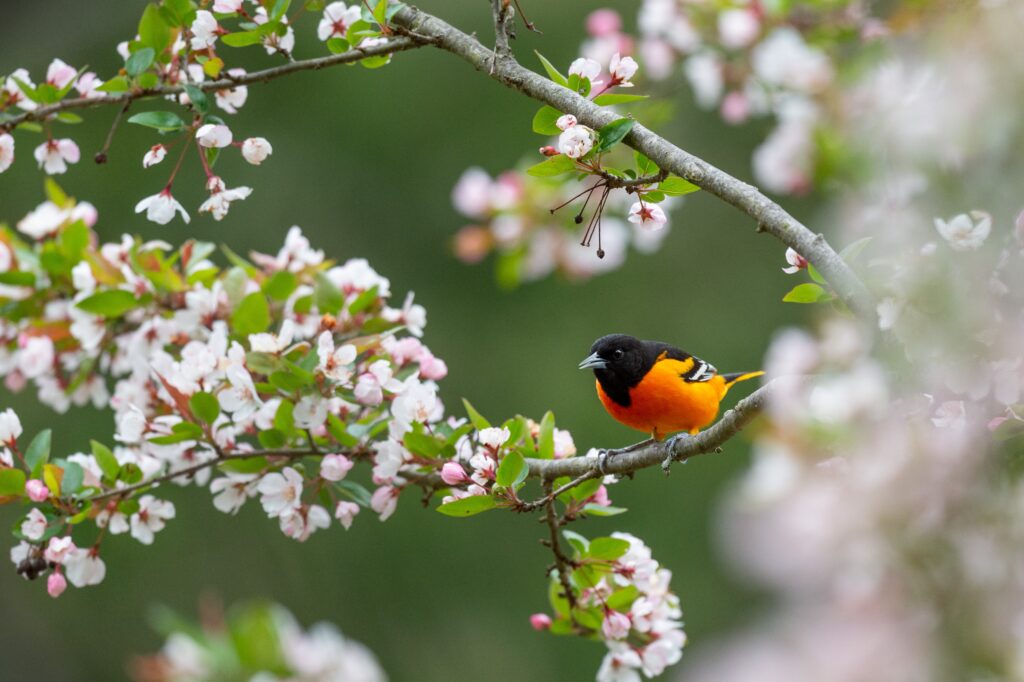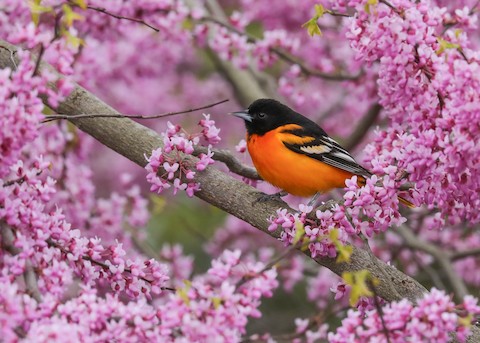Loving birds as much as I do, and growing up in northern Wisconsin, spotting a Baltimore oriole was a rare and thrilling treat for me. These strikingly attractive birds captivate with their vibrant plumage and melodious song. Even now as an adult, spotting one of these living works of nature’s art never fails to bring a smile to my face.
What’s in a Name?
There are actually 32 species of oriole in North, Central and South America. Although they share a name, New World orioles are not closely related to Old World orioles. The Baltimore oriole owes its name to the resemblance of the male’s colors to those on the coat-of-arms of 17th century Lord Baltimore.
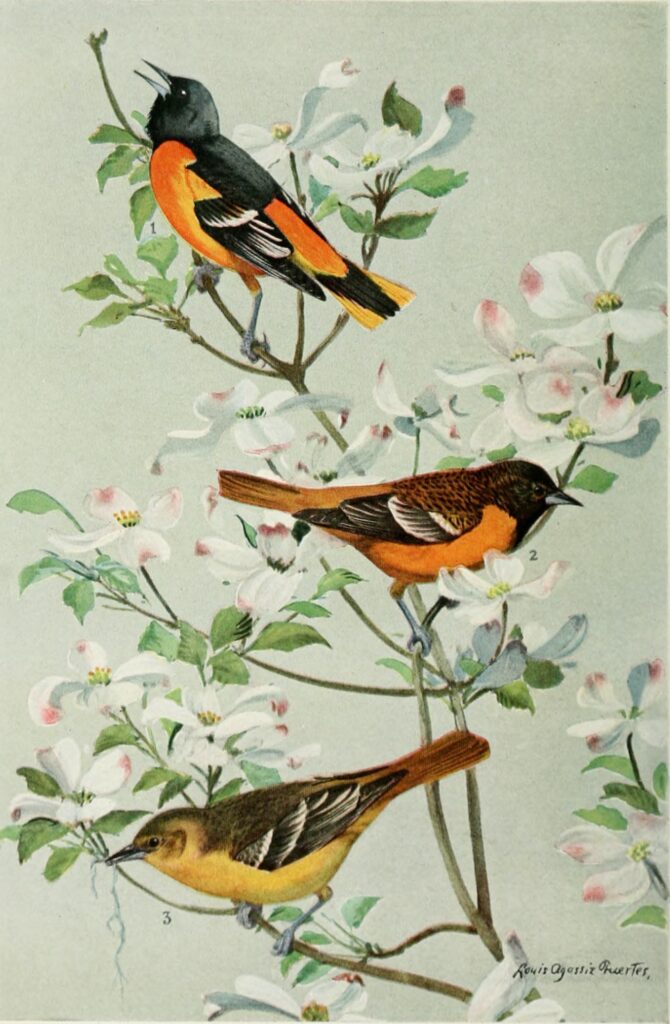
Occasional observations of Baltimore orioles interbreeding with Bullock’s orioles led to both being classified as a single species for a time. This species was named the northern oriole from 1973 until 1995, when researchers were able to determine that the two birds were in fact genetically distinct.
Geographic Range
The Baltimore oriole — Icterus galbula — is primarily found in the eastern and central regions of North America. Its breeding range extends from the Great Plains to the Atlantic coast and from southern Canada to the Gulf of Mexico. During winter, they seek warmer climates in Central America and parts of northern South America.
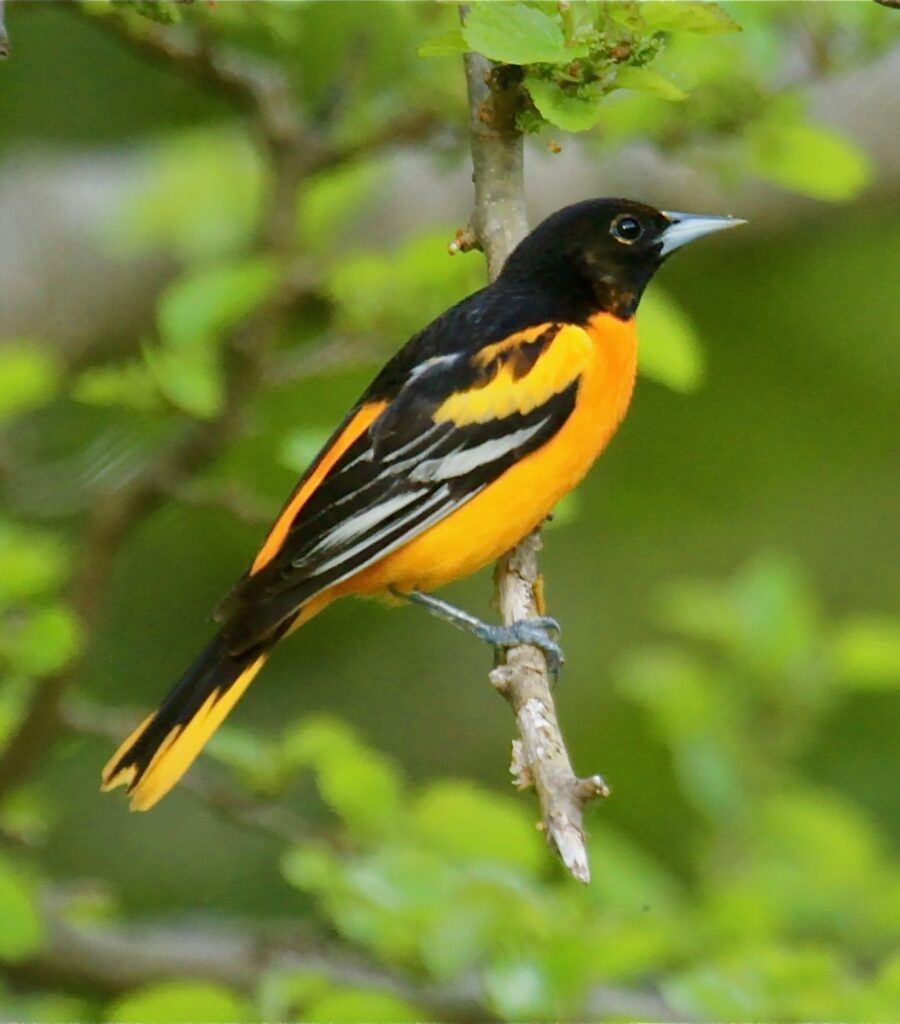
Own work, CC BY-SA 4.0,
https://commons.wikimedia.org/w/index.php?curid=81518401
Size and Description
Baltimore orioles are medium-sized perching birds. They typically measure seven to nine inches in length and nine to twelve inches across the wings. Males are usually larger than females, but only slightly so.
As with most backyard birds, the male Baltimore oriole takes center stage with its striking coloration. An adult male is orange on its underparts, shoulder patch and rump. The rest of his plumage is black.
An adult female is yellowish brown on its upper parts, with darker wings and dull orange yellow on her breast and belly. As adults, both genders have white bars on the wings.
Juvenile orioles appear similar to females. The males achieve adult plumage in the fall of their second year.
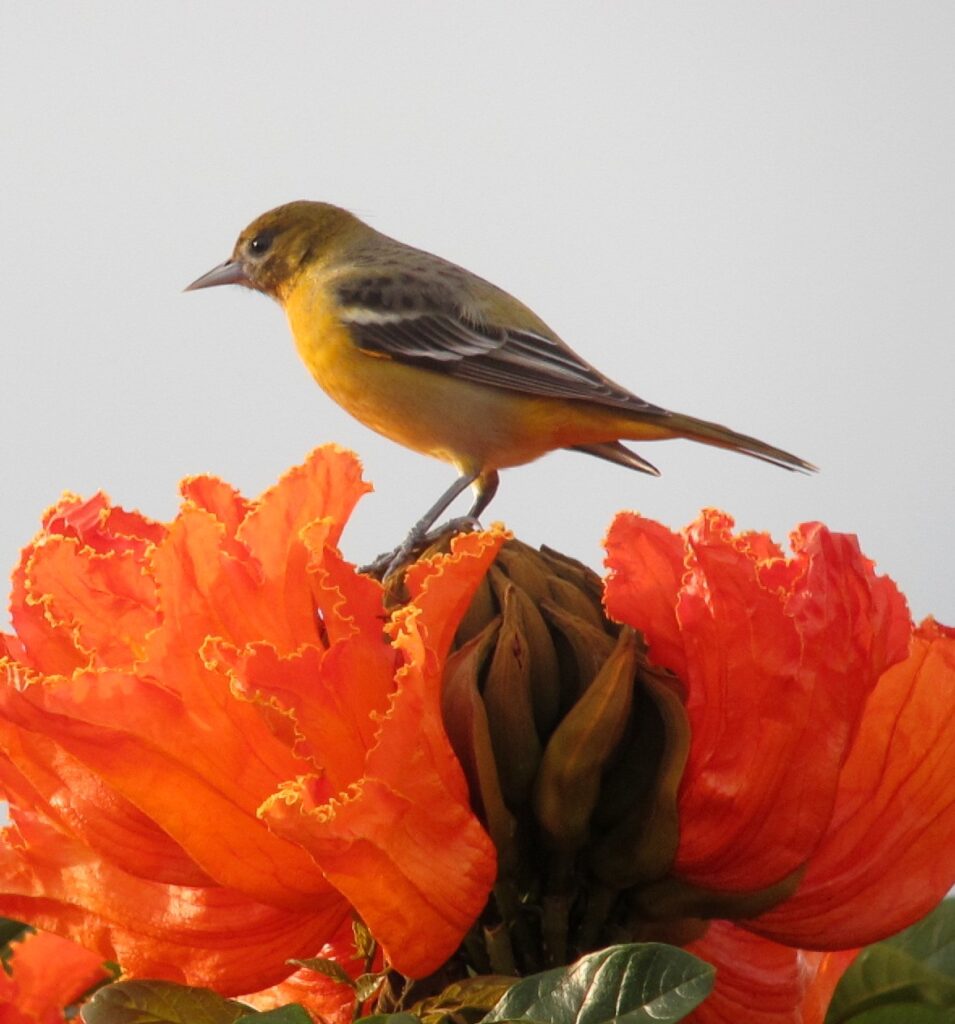
Rionegro, Antioquia, Colombia – CC BY-SA 2.0,
https://commons.wikimedia.org/w/index.php?curid=119028604
Mating, Nesting, and Rearing Habits
While monogamous during breeding season, Baltimore orioles do not mate for life. Once paired up, the birds build intricate hanging nests, using materials like plant fibers, grasses, and bits of string. Typically, the female does most of the work.
Baltimore orioles raise only one brood per breeding season. After four to six eggs are laid, the female incubates for 12 to 14 days while the male keeps watch. Both parents tend to the hatchlings, which are ready to begin flying after about two weeks.
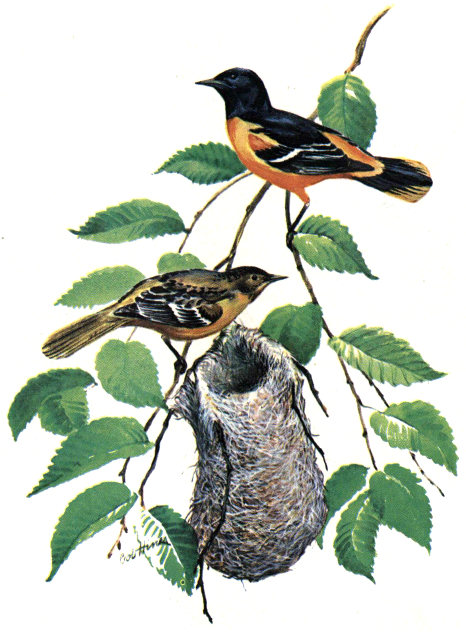
Image from Birds of Town and City by US Department of the Interior
Public Domain – Courtesy of FreeVintageArt.com
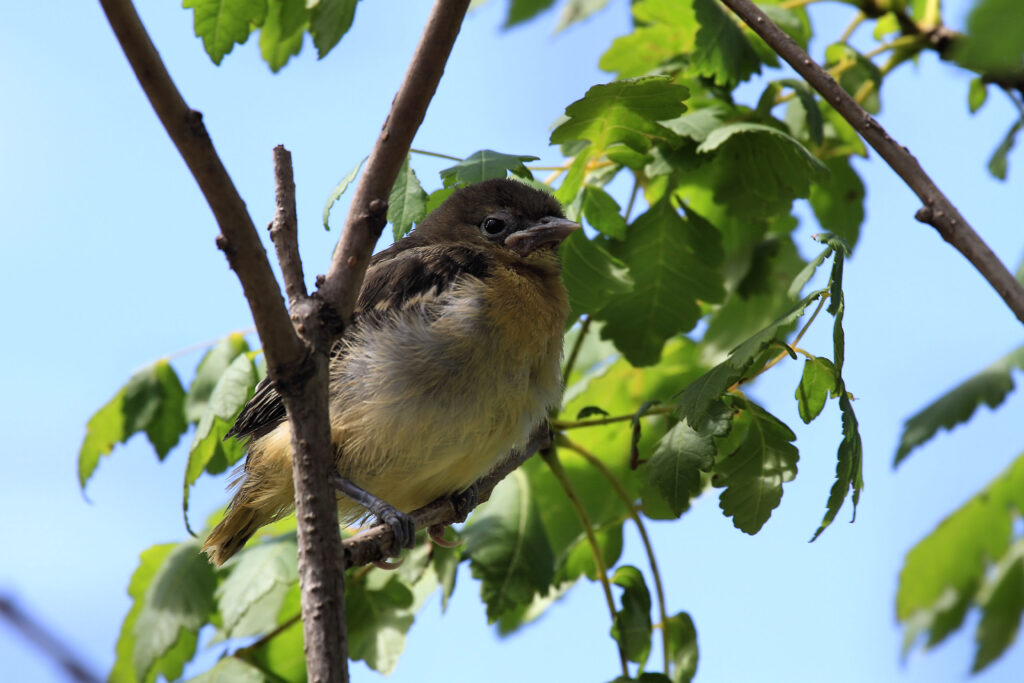
Image by Ken from Elkridge, Maryland, USA – CC BY-SA 2.0
https://commons.wikimedia.org/w/index.php?curid=10594639
A Long Migration
Baltimore orioles are neotropical migrants, traveling tremendous distances every year. After wintering in Central and South America, they return to North America for the breeding season. In late summer and early fall, they repeat the journey in the opposite direction.
What’s For Lunch?
Baltimore orioles generally like to feast on a variety of insects, buds, nectar and ripe fruits. During the breeding season, caterpillars, beetles, and grasshoppers provide calcium, protein and vital nutrients. At other times of the year, they show a strong preference for juicy, ripe, dark fruits like black cherries, mulberries, figs, blackberries, prickly pear fruits and purple, black or red grapes. They tend to ignore green grapes and yellow cherries even if they are ripe.
Nectar-yielding flowers are relished by Baltimore orioles, especially ones in shades of red and orange. Some favorites in the wild include: trumpet vines, coral honeysuckle, jewelweeds, columbine and crabapple blossoms. Buds are also consumed if the orioles don’t feel like waiting for the flowers to open.
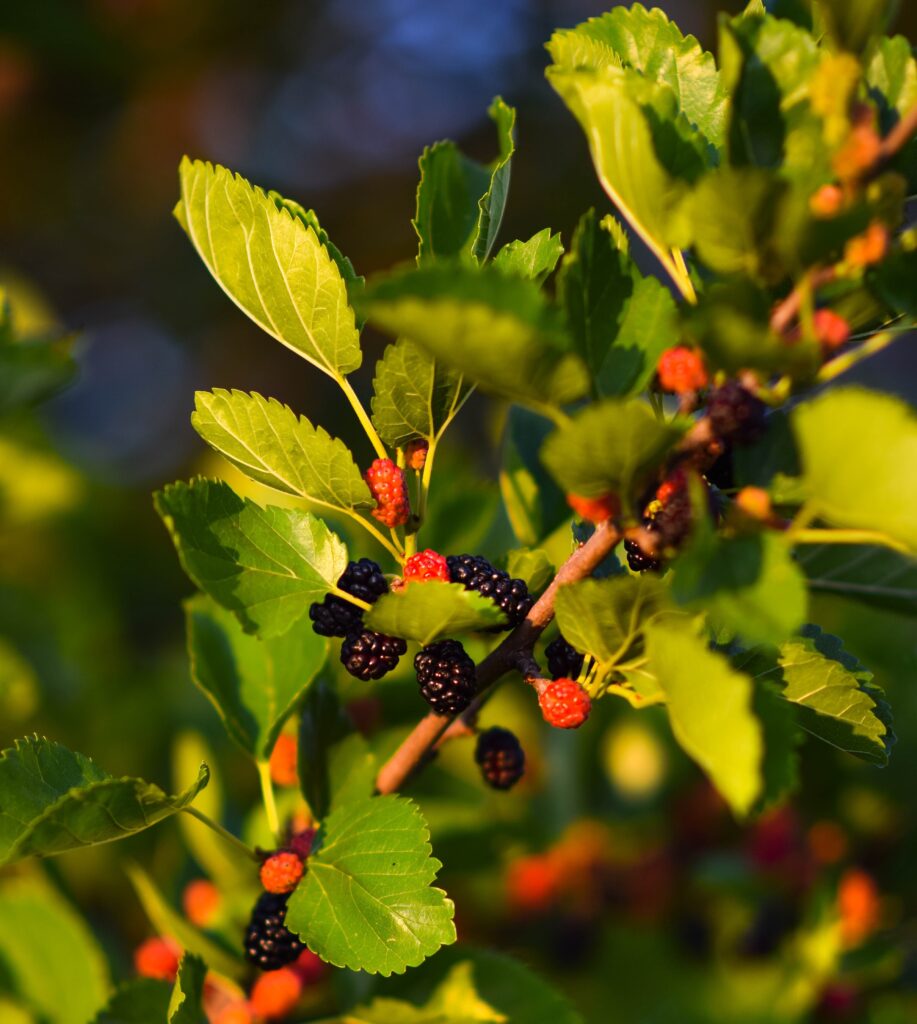
Photo Courtesy of Dmitry Bukhantsov via Unsplash
Where to Look
Birdwatchers seeking Baltimore orioles should look for open woodlands, forest edges, deciduous hardwood groves, fruit orchards and river banks. Don’t bother with deep forests. They don’t like those at all. Listening for their melodious, flute-like songs can also help in locating them.
Backyard Attraction
There are a number things you can do to encourage Baltimore orioles to hang around. They do not eat seeds and will not use birdhouses, but you still have options.
You may see an occasional oriole trying out your hummingbird feeder. Because of their radically different beak shapes, however, specially designed oriole feeders are a much better choice for providing nectar. Use one part ordinary granulated sugar and stir it in to four parts boiling water until it dissolves. Do not use any dyes or food coloring, and be sure to change out the nectar and thoroughly clean the feeder several times a week.

Image By Twofingered Typist – Own work – Public Domain, https://commons.wikimedia.org/w/index.php?curid=90224093
There are also specialty oriole feeders for providing fruits like oranges, grapefruit and nectarines. Or you can just cut the fruit in wedges and leave it sitting on your back porch. You don’t hear much about it, but apparently Baltimore orioles love watermelon, so you might try that as well.
Grape jelly and orange marmalade are also particular favorites. Make sure they contain no artificial sweeteners, colors or flavors and offer them in a shallow dish. Orioles also relish mealworms, especially during the breeding season.
Baltimore orioles like shallow, moving water for bathing purposes. A bird bath with a bubbler, dripper, or mister can provide the movement they prefer and the hydration they need during hot summer months. It is important to make sure you thoroughly clean and sanitize birdbaths at least several times per week.
Plant taller shade trees — elms, oaks or maples — for nesting and shelter, and aspens for edible buds. Blueberry, raspberry, blackberry and American elderberry bushes are real crowd-pleasers for snack time. Oriole’s favorite flowers include bee balm, salvia, cat mint, lobelia and fuschias. Planting them in masses helps to get the birds’ attention.
* * * * * * * * * * * * * * * * * * * * * * * * * * * *
So there you have it. The Baltimore oriole is one of our most popular backyard birds, and with good reason. Their striking colors, charming song and uniquely intricate nests appeal to birdwatchers everywhere. I hope you spot one of them soon, because I just know it’s going to make your day.
By Steven Roberts

